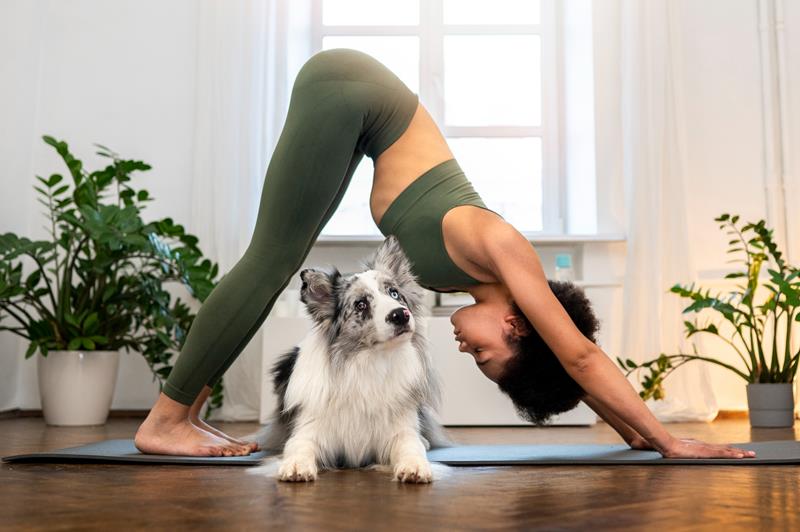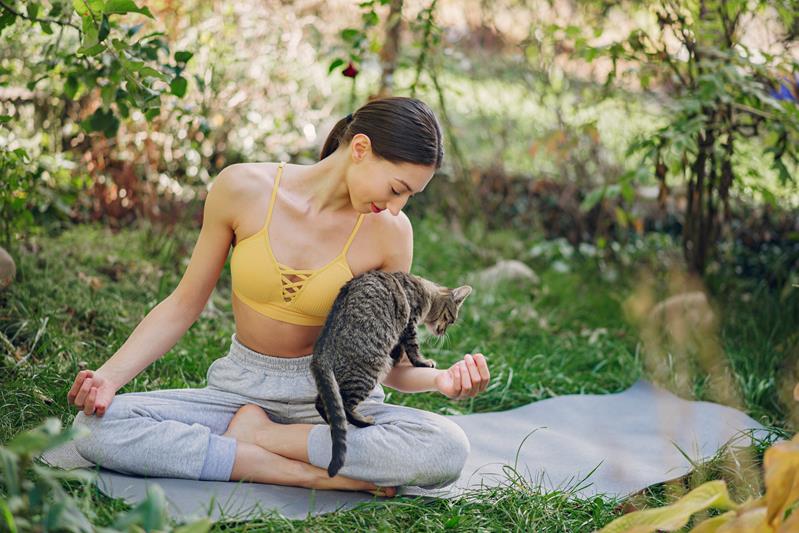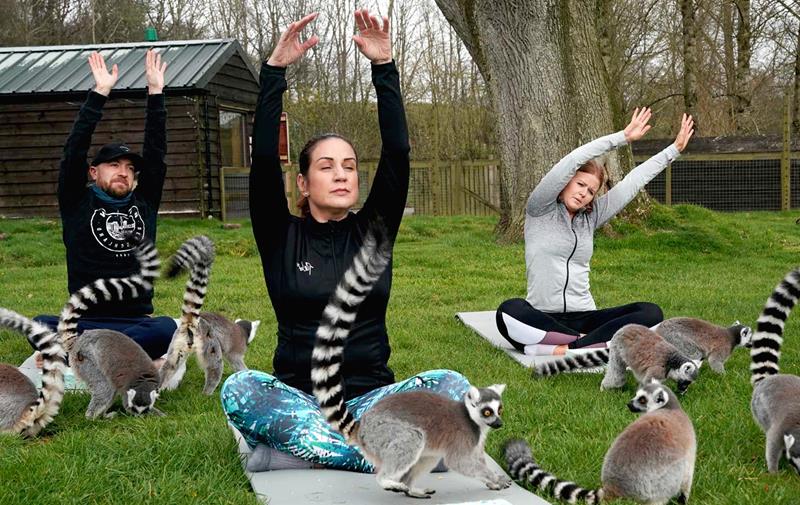Yoga with animals has become a popular trend in recent years, offering a unique combination of traditional yoga practice and interaction with animals. This combination not only makes the activity more fun and relaxing but also has a positive effect on mental health. In this article, we will look at the origins of this idea, discuss its potential negative aspects, share tips for choosing reliable organizers, and tell you what animals can be found in such yoga classes.
Concept of Yoga with Animals
What is the main key concept of such therapy? This practice combines traditional yoga with therapeutic animal interaction, creating a synergy between humans and nature. This interaction reduces stress and anxiety, improves mood and develops awareness and concentration. Classes are taught in groups, which promotes social connection and a sense of community. Yoga with animals makes the practice more accessible and fun by combining physical and mental exercise with elements of play and interaction with animals, which improves mental health and overall well-being.
Benefits
Pawga provides numerous mental health benefits through the unique synergy between exercise and therapeutic interactions with animals:
- They are reducing stress and anxiety. Animals have a natural ability to calm people. Stroking animals reduces cortisol levels and increases oxytocin levels.
- Improved emotional health. Interaction with animals promotes the production of endorphins and serotonin, which directly affects the improvement of mood.
- Increased levels of concentration and awareness. Observing the behavior of animals and practicing yoga with them requires concentration and mindfulness, which helps improve awareness.
All these benefits make yoga with animals a powerful tool for maintaining and improving psycho-emotional well-being.
Short History
Yoga with animals, as a separate direction, began to take shape in the early 2000s. Initially, these were spontaneous classes where pet owners practiced yoga in the presence of their pets. These sessions often took place in informal settings, such as backyards or parks, and were more intuitive than organized.
With the development of social networks and the spread of information about unusual forms of fitness and meditation, yoga with animals has begun to gain popularity. The first organized classes and studios offering animal-assisted yoga emerged in the early 2010s. One of the first activities to become popular was yoga with dogs (Doga), which quickly gained popularity among dog lovers. After this, other trends with cats, goats, horses, etc. began to develop.
Pawga as a destination was started in 2020 by three friends from Chennai – Subhashree Madhavan, Swati Renugopal and Sindhuja Krishnakumar – in collaboration with animal rescue organization Blue Cross of India. Inspired by similar practices with goats in the UK, the founders brought the idea to India to promote animal welfare and adoption. Their first session, held in Hyderabad in January 2023, marked the beginning of a successful project.
Mission
Today, yoga with animals continues to develop and take on new forms. Specialized courses and retreats are held in various parts of the world, combining traditional yoga practices with unique experiences of interacting with animals.
In addition, yoga with animals began to be used for therapeutic purposes. Some programs include animal-assisted yoga for people with mental health conditions, autism, post-traumatic stress disorder and other conditions that require emotional support and relaxation. Interacting with animals helps patients reduce stress, improve their mood, and improve their overall quality of life.

Evaluating Its Benefits and Concerns
When it comes to practicing yoga with animals, it’s worth considering both its benefits and potential drawbacks. Pawga can help improve the psychological well-being of participants, however, certain aspects may require attention and caution.
The erratic behavior of animals during classes can cause distractions and potential safety hazards for participants. It’s crucial to handle allergies and uphold cleanliness standards when animals are around to avoid health issues for attendees.
Equally significant is addressing ethical considerations to safeguard the animals’ well-being and promote a pleasant environment for all involved. Esteemed British animal psychologist Esme Wheeler contends that this approach can adversely affect dogs chosen at a young age https://www.theguardian.com/commentisfree/2023/jul/13/puppy-yoga-dog-welfare-documentary-animal-welfare
Her key arguments include:
- Separating puppies from their mothers at six weeks old severely impacts their emotional and behavioral growth.
This practice can be highly stressful for puppies, subjecting them to excessive heat, inadequate hydration, sleep deprivation, and unfamiliar handling.
- Without a secure environment, long-term emotional and behavioral issues can arise in these young animals.
- Without a secure environment, long-term emotional and behavioral issues can arise in these young animals.
Esme Wheeler advocates for stricter government laws to safeguard vulnerable animals from exploitation.
Recommendations for Choosing a Good Puppy Yoga Class
Before selecting an ideal spot for yoga practice, it’s crucial to heed a few basic guidelines. Ensure that any puppy yoga sessions adhere strictly to local animal welfare regulations and possess the required permits to guarantee high standards of care. Prior to enrolling, review feedback from past participants to confirm their dedication to ethical standards and animal welfare. Visit the venue beforehand to evaluate its suitability for training, ensuring it provides a conducive environment for puppies. Confirm that the class is limited to adult dogs or puppies aged over eight weeks, with provisions made for their hydration and rest needs.
Creating a stress-free environment for animals is crucial. Verify the trainers’ expertise in handling animals and their capability to foster a secure and inviting atmosphere. Lastly, select activities that uphold your principles of animal welfare, prioritizing their well-being.
Yoga with farm animals
Today, yoga practices with puppies and cats are the leading among people’s requests, however, other interesting areas may find a response.
Yoga classes are held in various places around the world where participants can practice asanas in the company of various farm animals such as goats, sheep or even llamas. This not only helps people relax and enjoy nature but also promotes a deeper understanding of interactions with animals. Such classes take place in specialized centers and farms, where yoga charity fundraisers are also often held. This is an example of someone wanting to do good for nature and coming up with a way to not only raise money but also allow animals to enjoy nature.
The history of zoo yoga shows how innovative ideas and spontaneous beginnings can evolve into popular and established practices. Thanks to its versatility and positive impact on mental health, yoga with animals continues to find its fans around the world and is developing, bringing joy and peace to all participants.




